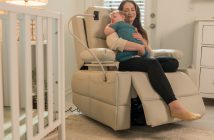More than often, braces are thought to be something exclusively meant for children and teenagers. Over the years, as technologies have advanced, braces have become incredibly popular amongst not just teenagers but also adults who are looking to correct their smile. One of the biggest misconceptions that people have about adult braces is that the implementation and process of getting braces are the same as it is for children and teenagers. While this isn’t exactly incorrect, there are a number of differences between childhood and adult braces which we will look into today. Grab a cuppa and read on to find out more!
Taking Age Into Consideration
With age comes a whole host of health complications, some of which make the implementation of braces slightly more complicated than it would be in a child. Some of these conditions include low bone density, insufficient blood supply, gingivitis (gum disease) and harder bones. Because adults are fully developed and no longer growing, it is not uncommon for orthodontic treatments to work slightly slower than they would in a child or teenager. Existing gum disease will also have to be treated prior to orthodontic treatment, thus adding another layer to the orthodontic treatment process.
Higher Costs
Cost is always an important factor to many people and there is no one size fits all when it comes to the affordability of braces. Generally, the less visible the orthodontics, the more money you can expect to fork out. For example, the cost of invisible aligners is significantly more than that of traditional metal braces. Considering most adults are looking for the most discreet form of orthodontic treatment, it is no surprise that the majority opt for invisible aligners or clear braces. This may result in a higher cost for adults who are looking to correct their smile, although this is not always the case — if you opt for traditional metal braces, you can expect to pay a very similar amount that one would pay for childhood braces.
Longer Treatment Time
As mentioned at the start of this article, orthodontic treatment takes much longer for adults. This is mainly because adults have fully developed teeth and jaws, resulting in teeth that are more settled and much more difficult to shift. Braces work by applying pressure to the root of your teeth, thus causing them to gradually shift into place. As your bone adjusts, your teeth shift into their permanent new position. Because mature bones shift at a slower rate due to higher density, it almost always takes longer for adult teeth to shift into proper alignment.
Past Extractions or Dental Complications
One of the biggest challenges that orthodontists face when treating adults are past dental procedures. This is mainly because children have a much lower chance of having previous extractions or dental complications when compared to adults. If an adult happens to have missing teeth, there may be a need for additional procedures such as adding prosthetic bone to areas where teeth have been pulled out. Prosthetic bone will ensure that any teeth shifted to the afflicted area are able to re-anchor themselves into their new position.
Root Resorption and TMD
Lastly, a few of the added vulnerabilities that adults face in orthodontic treatment are root resorption and TMJ. Root resorption is a common type of dental injury that causes a loss of a part or parts of a tooth. As a result, the body reabsorbs the root of the tooth and leaves it without proper anchorage. Another factor that may prove to be difficult is TMJ – temporomandibular joint disorder. This is when a patient suffers a problem with the jaw that affects chewing and overall movement of the jaw. TMD makes orthodontic treatment more of a challenge and may require the patient to undergo a series of medications and/or treatments prior to orthodontic realignment.
____________
While the treatment for both childhood and adult braces remains relatively similar, there are a number of factors that may make adult treatment a little more complicated. However, it is important to note that although it may be slightly more difficult, it is entirely possible for adults to receive successful orthodontic treatment with minimal complications along the way!




